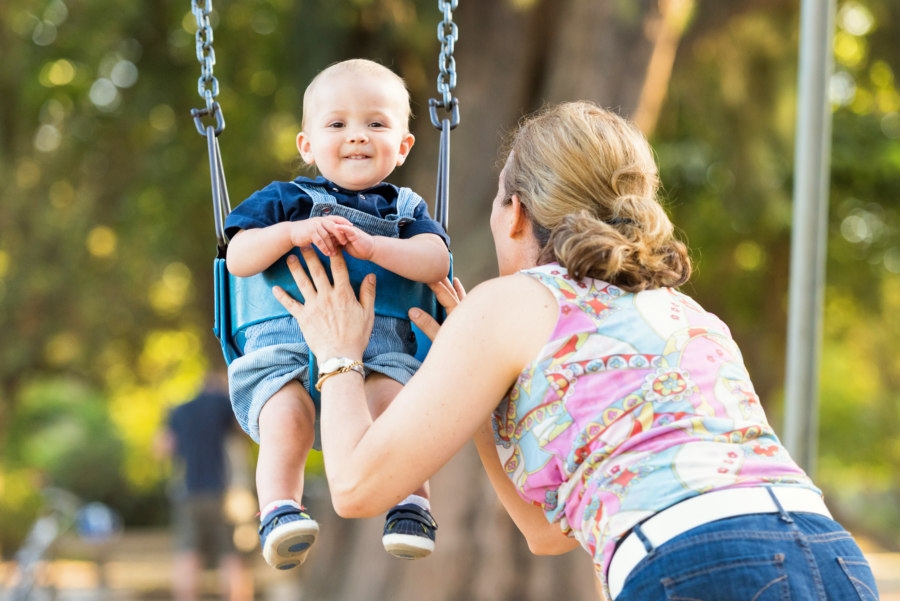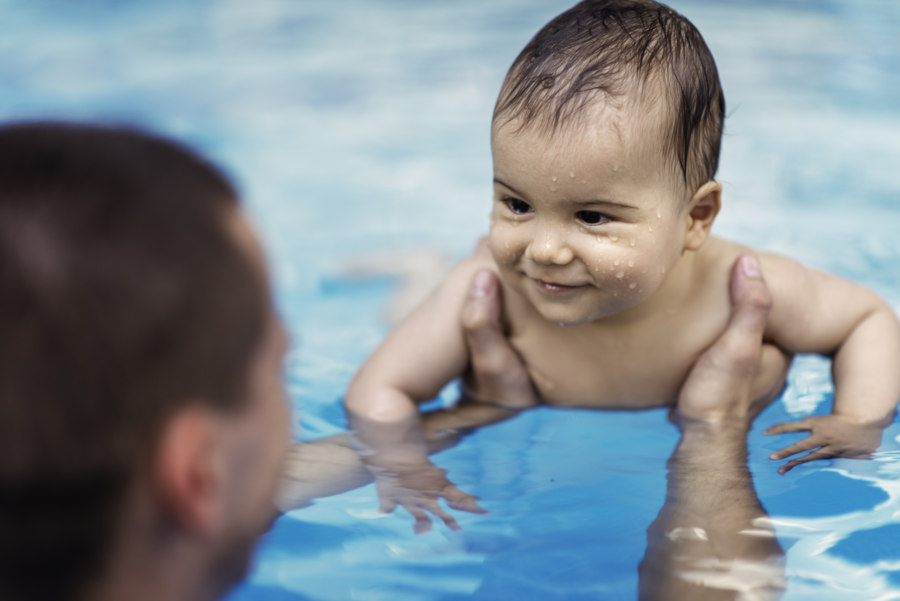We have covered ways to baby proof your home in each room of your house, but what about the outside? Whether you are playing in your yard, at the playground or at the community rec center or pool, we have gathered safety tips for you to use anywhere.

Summer Months
Insects
Carefully watch your child and make sure they are not playing in places that insects nest or congregate, such as stagnant water (which is a breeding ground of mosquitos). However, you want to use caution when applying bug spray onto your child’s skin. The AAP recommends that maximum DEET content of bug repellent be between 10% – 30% for infants, and should not be used on infants younger than 2 months. As always, test the spray on a small patch of skin to monitor your child for an allergic reaction.
Sunburn
Try to keep your infant out of direct sunlight and apply a minimal amount of at least SPF 15 sunscreen to exposed areas such as the face, ears, nose, and neck if they will be in the sun. Try to dress your infant in loose fitting clothing that will cover their legs and arms from the sun. Stay away from overly scented sunscreen and other products, as well as combination sunscreen bug spray, since reapplication is necessary for sunscreen, but can provide too much repellent if reapplied in the combination formula.
Water Safety
Even small bodies of water such as buckets, bathtubs, ditches, and fountains can pose a drowning risk for infants. Drowning is one of the highest causes of death for young children so it is imperative that you supervise them with undivided attention whether they are in or near a body of water, no matter how small.
- Always supervise your infant in areas around water.
- Children who are swimming, even in a toddler’s tool should be watched constantly by an adult that preferably knows CPR. If a child is swimming, have them wear a life vest in place of inflatables, as life vests do not run the risk of deflating.
- Spas and hot tubs can be dangerous for young children, who can easily become overheated in them.
- Always eliminate distractions when your child is in the water.

Winter Months
- Layering is the best way to keep your infant warm and protect them from the bitter cold of winter.
- Always remember gloves, boots, and a hat to protect all exposed skin.
- The general rule is to dress infants in one more layer than an adult would need in cold conditions. However, when in a car, make sure your infant doesn’t overheat by using a few thin layers rather than thick and bulky coats and snowsuits. Bulky coats and snowsuits can pose a safety hazard if the child is wearing them and the car is involved in an accident.
- If your infant’s clothes should get wet, change them into dry clothes as soon as possible.

